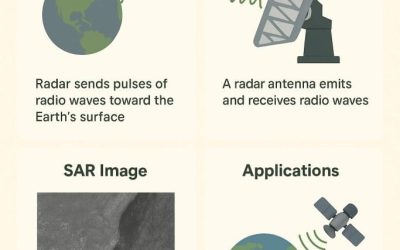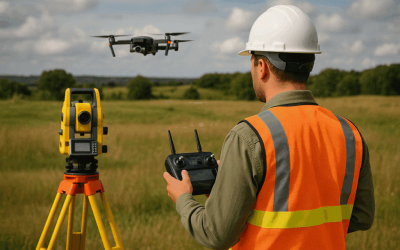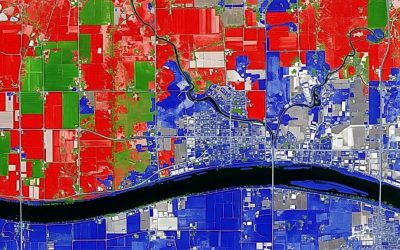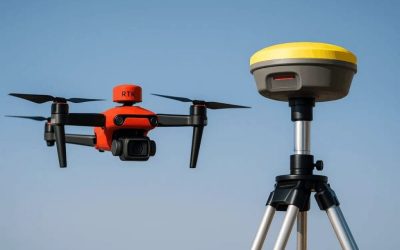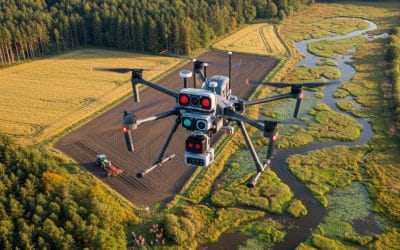When disaster strikes—whether it’s a hurricane, earthquake, or wildfire—every second counts. Emergency responders need accurate, real-time data to save lives, assess damage, and coordinate recovery efforts. Enter drones: small, agile, and equipped with cutting-edge remote sensing and GIS technology, these unmanned aerial vehicles (UAVs) are transforming how we respond to crises. From mapping flood zones to aiding search-and-rescue missions, drones are proving to be indispensable tools in disaster management. Let’s explore how they’re changing the game and why they’re becoming a go-to solution for governments, NGOs, and emergency teams worldwide.
The Power of Drones in Crisis Situations
Imagine a coastal town battered by a hurricane. Floodwaters have submerged roads, buildings are in ruins, and communication lines are down. Traditional methods of assessing damage—ground surveys or manned helicopters—are slow, expensive, and often dangerous. Drones, however, can be deployed quickly, capturing high-resolution imagery and geospatial data from angles and altitudes that would otherwise be inaccessible.
Equipped with advanced sensors like LiDAR, thermal cameras, and multispectral imaging, drones provide a bird’s-eye view of disaster zones. This data feeds into Geographic Information Systems (GIS), creating detailed maps and models that help responders understand the scope of the damage, prioritize resources, and plan recovery efforts. Unlike satellites, which may be hindered by cloud cover or delayed data delivery, drones offer real-time insights with unmatched precision, often at a fraction of the cost.
Key Applications of Drones in Disaster Response
1. Rapid Damage Assessment
After a disaster, assessing the extent of destruction is critical for directing aid and resources. Drones can survey vast areas in minutes, capturing high-resolution images and videos of damaged infrastructure, roads, and homes. By integrating this data into GIS platforms, responders can generate 3D models and heatmaps to identify the hardest-hit areas. For example, after the 2017 Hurricane Harvey in Texas, drones were used to map flooded neighborhoods, helping FEMA and local agencies allocate resources efficiently.
2. Search and Rescue Operations
Time is of the essence in locating missing persons. Drones equipped with thermal imaging can detect heat signatures in rubble, dense forests, or flooded areas, even at night or in low-visibility conditions. In the 2015 Nepal earthquake, drones helped rescue teams identify survivors trapped under collapsed buildings, guiding ground crews to their exact locations. Pairing drone data with GIS allows teams to overlay terrain maps, improving navigation in chaotic environments.
3. Flood and Wildfire Mapping
Floods and wildfires are dynamic disasters that require constant monitoring. Drones can track the spread of floodwaters or fire fronts in real time, providing data to predict their movement and impact. Multispectral sensors can assess water depth or vegetation stress, while GIS tools integrate this data with topographic maps to model flood risks or fire paths. During the 2020 Australian bushfires, drones mapped fire-damaged areas, helping authorities prioritize containment efforts and assess ecological impacts.
4. Delivery of Critical Supplies
In areas cut off by damaged infrastructure, drones can deliver essential supplies like food, water, or medical kits. Lightweight cargo drones are increasingly used to reach remote or stranded communities. For instance, in 2019, drones delivered vaccines and blood supplies to isolated villages in Vanuatu after Cyclone Pam, bypassing impassable roads. GIS ensures these deliveries are routed efficiently, avoiding hazards and optimizing flight paths.
5. Post-Disaster Recovery Planning
Once the immediate crisis subsides, drones play a vital role in recovery. They can survey damaged infrastructure, monitor reconstruction progress, and assess environmental impacts like erosion or contamination. GIS analysis turns this data into actionable plans, helping communities rebuild smarter and more resiliently. For example, after the 2011 Tōhoku earthquake and tsunami in Japan, drones mapped coastal areas to guide the redesign of flood defenses and urban layouts.
Why Drones Are a Game-Changer
Drones offer several advantages over traditional methods in disaster response:
- Speed: Drones can be deployed within hours, providing data faster than ground teams or manned aircraft.
- Safety: They keep responders out of hazardous areas, reducing the risk of injury in unstable environments.
- Cost-Effectiveness: Compared to helicopters or satellite imagery, drones are a low-cost alternative with high-resolution results.
- Flexibility: Drones can operate in diverse conditions, from urban rubble to remote forests, and carry specialized sensors tailored to the mission.
When paired with GIS, drone data becomes even more powerful. GIS platforms can process and visualize complex datasets, creating maps that reveal patterns, predict risks, and guide decision-making. This synergy allows responders to act with precision, whether they’re directing evacuations or planning long-term recovery.
Real-World Impact: A Case Study
In 2021, when Haiti was struck by a 7.2-magnitude earthquake, drones were deployed by international aid organizations to support relief efforts. UAVs mapped over 200 square kilometers of affected areas in just two days, identifying collapsed buildings and blocked roads. By feeding this imagery into GIS software, responders created detailed damage maps that guided search-and-rescue teams and prioritized aid delivery. The result? Faster response times, more lives saved, and a clearer path to recovery.
Challenges and the Road Ahead
While drones are revolutionizing disaster response, challenges remain. Regulatory hurdles, such as airspace restrictions, can delay deployments. Battery life limits flight times, and processing large datasets requires robust GIS expertise. However, advancements are addressing these issues. AI-powered drones are automating data analysis, while longer-lasting batteries and solar-powered UAVs are extending mission durations. As drone technology evolves, its role in crisis management will only grow.
The Future of Drones in Disaster Management
The potential of drones in disaster response is boundless. Emerging technologies like swarm drones—fleets of coordinated UAVs—could cover larger areas simultaneously, while machine learning could enhance real-time data interpretation. Imagine a future where autonomous drones predict flood paths, deliver supplies, and update GIS maps in a seamless, integrated system. For communities facing the increasing threat of climate-driven disasters, these innovations offer hope and resilience.
Conclusion: A New Era of Crisis Response
Drones are no longer just high-tech gadgets—they’re lifesaving tools that redefine how we respond to disasters. By combining the agility of UAVs with the analytical power of GIS, emergency teams can act faster, smarter, and safer. From mapping devastated landscapes to delivering critical supplies, drones are proving their worth in the toughest moments. As technology advances, the sky’s the limit for how drones will continue to save lives and rebuild communities.






























































































